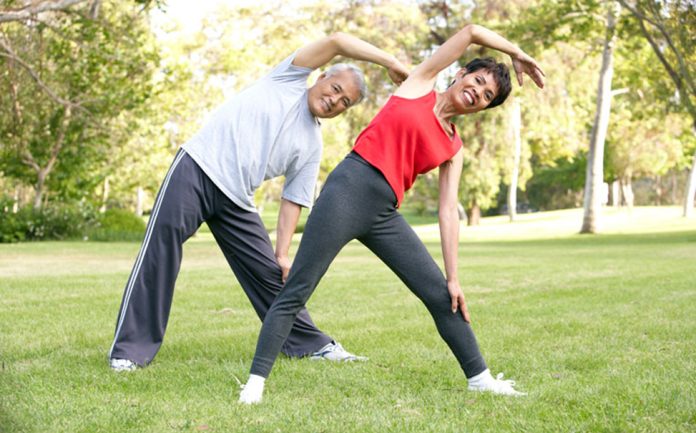High blood pressure is a common condition that affects the body’s arteries. It’s also called hypertension. If you have high blood pressure, the force of the blood pushing against the artery walls is consistently too high. The heart has to work harder to pump blood.
Blood pressure is measured in millimeters of mercury (mm Hg). In general, hypertension is a blood pressure reading of 130/80 millimeters of mercury (mm Hg) or higher.
Keeping your blood pressure in check isn’t just about cutting back on salt. It also means moving more and committing to a more active life.If you’re new to exercise, you have a lot of options, whether it’s hiking with your family, swimming at a local pool, joining a club sports team, trying yoga, or signing up for sessions with a personal trainer. Chances are, you’ll find something that will help you get your blood pressure down and may even become your new favorite hobby.
Getting started may be simpler than you think.
It Doesn’t Take Much
If you’re a beginner, start with 10 to 15 minutes. Add 5 minutes every 2 to 4 weeks. Try to add more time gradually until you reach 30 to 60 minutes a day, 3 to 5 days a week.
“People with lower fitness levels should focus on starting with shorter durations and gradually increase the time as their fitness improves,” says Cedric Bryant, PhD, CEO of the American Council on Exercise.
The American Heart Association,American Council on Exercise, and many other expert groups recommend at least 150 minutes a week of exercise. Oregon cardiologist James Beckerman, MD, says do what makes sense to you and what you can work into your schedule. “I personally recommend 30 minutes every day, “he says. “It’s easier to remember and less math to do.”
The Payoff
Aerobic exercise could shave five points off your systolic blood pressure (the first, or top, number in your blood pressure reading), and three points off your diastolic blood pressure (the second, or bottom, number).
Activities such as walking, swimming, cycling, and low-impact aerobics should be the core of your exercise program.
But you’ll get the payoff doing anything that makes your heart beat a bit faster, whether you’re hiking with your dog, walking on a treadmill, going out dancing next weekend, taking a Zumba class. Pick a bunch of things that will keep you interested.
Be Smart About Strength Training
Strength training can be good for your blood pressure, too. But don’t lift heavy weights. Learn from a pro what you need to do, and don’t hold your breath.
“Always use lower resistances and higher repetitions,” Bryant says. “And make sure to exhale during muscle exertion to avoid excessive increases in blood pressure.”
Here’s why: Blood pressure naturally goes up while you’re exercising, but holding your breath and doing more intense resistance training tend to raise blood pressure even further, Beckerman says. If you have high blood pressure readings to begin with, it makes sense to avoid activities that cause big increases in blood pressure.
Ask About Limits
Talk to your doctors before beginning any new exercise program. They can let you know what, if anything, is off-limits, and whether your medications might affect your workout.
For example, Beckerman says, doctors sometimes prescribe beta blockers to treat hypertension, but they can also lower your heart rate and affect your stamina.
Stick With It
The main ingredient for success: being consistent. Start slowly, and stay within your guidelines.
Be patient with yourself as you shift into exercise. “Don’t try to conquer the world on your first workout,” Bryant says. The goal is to create a sustainable plan and make it a lasting part of your lifestyle.
Source: Webmd.com









